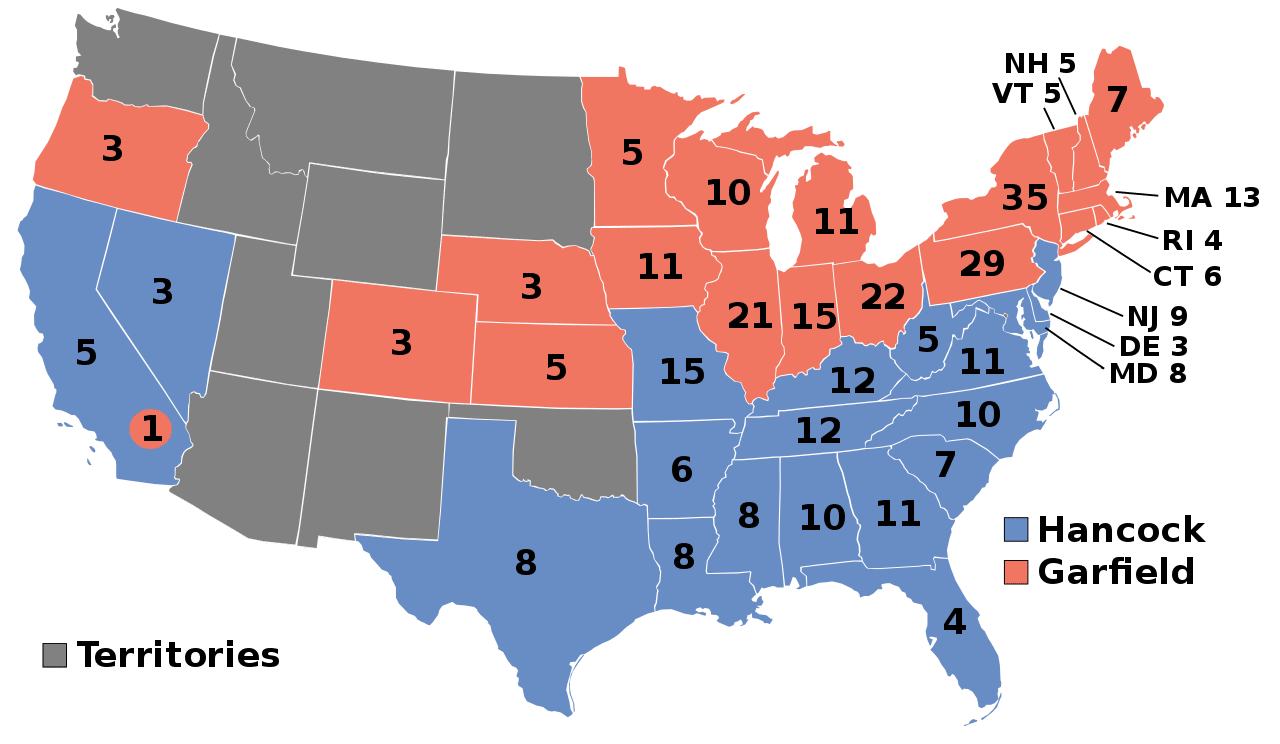The Presidential Election of 1880 would become another example of how divided the country had become.

Since before the Civil War, the two major parties were the Republicans and the Democrats, and after the end of the Reconstruction Era in 1877, the national electorate was closely divided between them.
Party membership was only partly based on ideology; party identification often reflected ethnic and religious background, as well as Civil War loyalties that were still keenly felt by many voters.
Most Northern Protestants voted Republican, as did black Southerners. On the other hand, white Southerners and Northern Catholics generally voted Democratic.
Both parties would choose Union officers as their nominees.
The nominees are as follows:
- Republicans: James Garfield and Vice President Chester A. Arthur
- Democrats: Winfield Scott Hancock and Vice President William H. English
Platforms
Republicans: This issue of the day was tariffs, and the Republicans supported them. High tariffs on foreign products meant that American businesses could compete with cheaper foreign products because it would drive their prices up. This would help save American jobs and, in turn, help the American economy.
Democrats: Democrats generally condemned them as a source of higher prices for goods, whereas the higher revenues that they generated for the federal government were not needed after the conclusion of the Civil War. However, the issue tended to divide the party since northern Democrats were in favor of high tariffs.
Other issues that continued to gain momentum were prohibition, breaking up monopolies, civil rights, Chinese immigration, and women's suffrage.
Outcome
The turnout was extremely high for this election, and the margin of victory was the closest in history.
The winner would be James Garfield, and this would become the sixth consecutive election won by Republicans, which tied the record set by the Democratic-Republicans.
In the Electoral College, the vote was more decisive. As expected, Hancock carried the South and border states, but Garfield swept all but one of the Northern states, which included his home state of Ohio.
Both candidates carried nineteen states, but Garfield's triumphs in the more populous North translated into a 214–155 electoral college victor.
